The lighting is so often an afterthought – a few lampshades thrown in when the rest of the work is finished and the money has run out. But it is such a key part of a design scheme – so easy to get wrong and so stunning when it’s done right, that I collaborated with John Cullen Lighting to create a mini series showing you the dos and don’ts room by room.
Sally Storey, the design director of John Cullen Lighting, who has written several books on the subject, visited my house and we went round each room in the house talking about what I had done right (not so much) what I had done wrong (rather more) and how I could put things right or improve them. Along the way we discussed different products and lighting effects and basically tried to demistify the subject so that it would be useful for everyone.
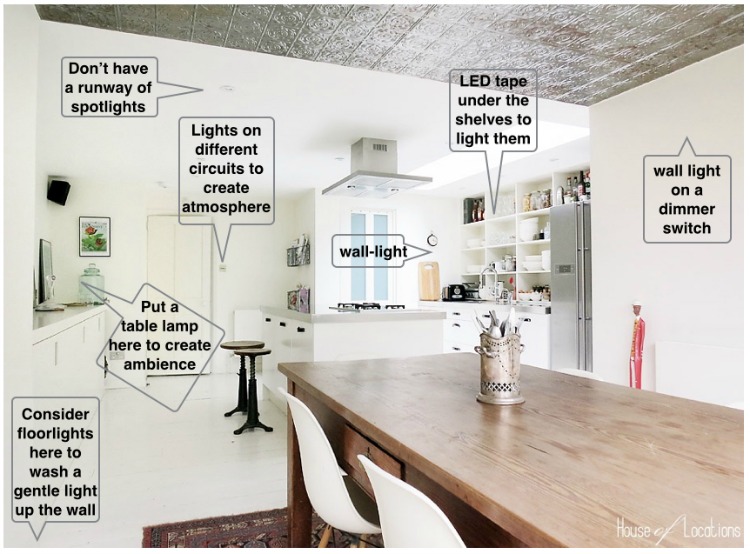
We started off in my kitchen, where I had at least followed one of Sally’s rules: you don’t need to put your downlights/spotlights – call them what you will – in a grid pattern across the ceiling. You need to decide where you actually need them and place them accordingly, which I have managed to do over the island. The point being that if they are properly installed you should barely see the lights themselves but merely the light that they provide – if you see what I mean.
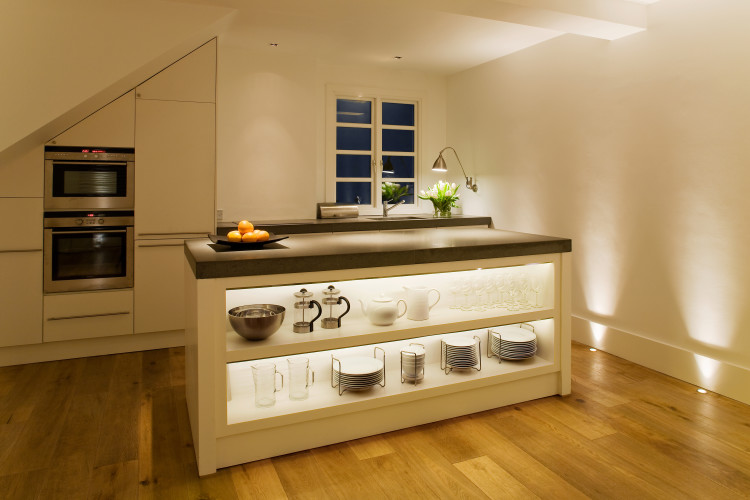
wall lights and display lighting will create real atmosphere
And this is the first place I went wrong. Most of us don’t buy properly recessed downlights. This we end up with the bulb flush with the ceiling which means you see both the bulb and a harsh light around it rather than just being aware of light in the place that you need it to be. So that’s the second tip: if you are having downlighters then make sure you buy ones with a bulb that is concealed from view. Ideally the bulb should have a black baffle, which is a tube that sets the light source back away from the ceiling. It might sound counter-intuitive in a white ceiling but trust me on this (well at least trust Sally) it will make it more invisible. A white surrounding will reflect the light from the bulb back out making you more aware of it. A black surround will absorb the immediate harshness of the bulb light and refract back only the soft light that you need to see by.
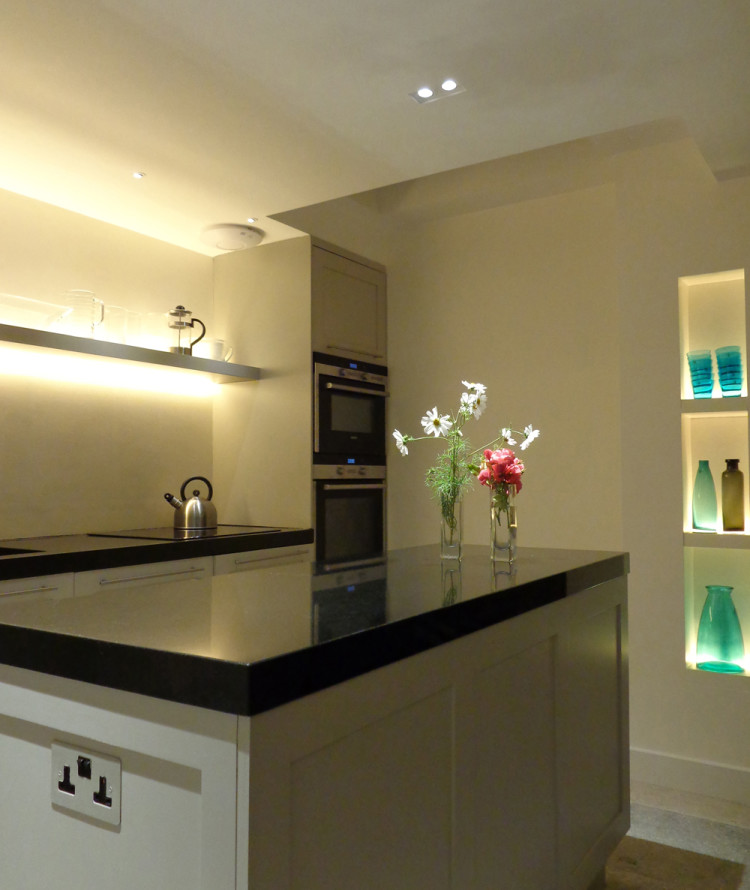
use LED tape to light your display shelves and create ambient lighting
So we’ve established that you don’t need your lights in a uniform grid, you need to hide them up in the ceiling and the bulb needs a black baffle (try the Polespring from John Cullen). Finally, they should be over the middle of the worktop so you can see what you are doing but don’t create your own shadow. And here too I went wrong. I appear to have lighted a runway down the middle of the kitchen rather than lighting the shelves or artwork. Now that Sally has pointed that out it seems so blindingly obvious (and stupid) that I can’t quite believe I did it.
The next issue is one of atmosphere. It can be hard to create this in kitchens when most of us just use those downlights. Rule number 1: dimmers. Sally uses them in every room. She also divides lights into different circuits so you can choose which parts of the room to light at any given time.
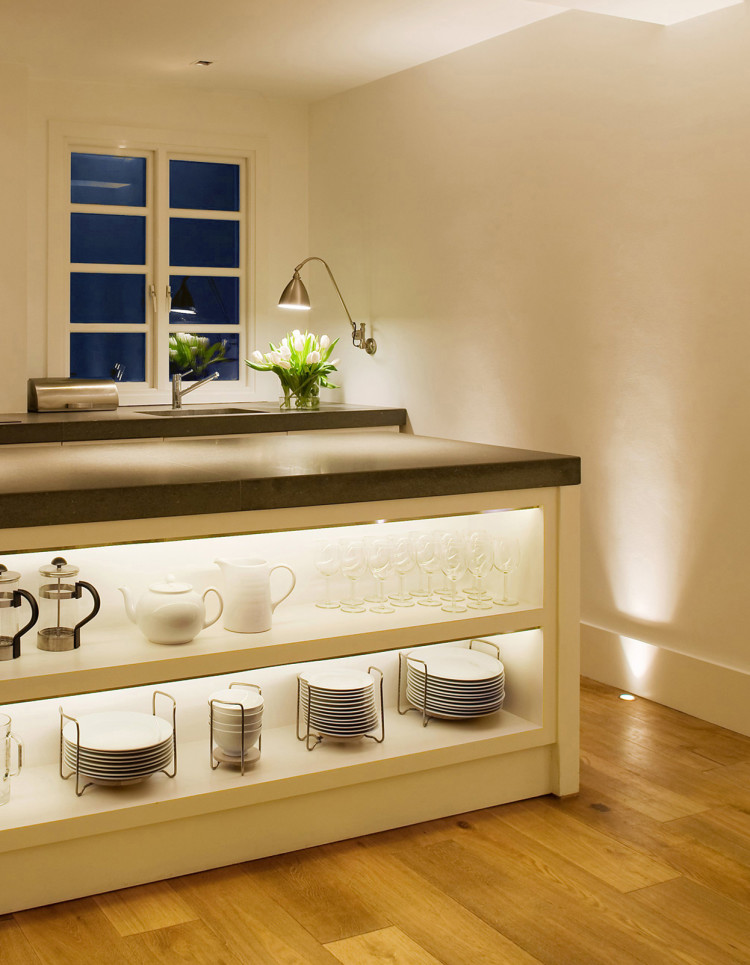
I scored one point by pointing to a table lamp that I have in one corner. I was quietly congratulating myself when Sally said I needed another at the other end. And that I should have a wall light at one end of the work top. Desperate to claw back some credibility, I said I had been thinking about that but wasn’t sure if one wall light on its own would work when I couldn’t have one at the other end. She sniffed at my desire for symmetry and suggested an industrial style light at one end as she has in her kitchen. I immediately want that.
Sally is also a fan of using lights in clever ways. She is a big fan of LED tape which she suggested I could fix under my open shelves and which would throw soft light out and highlight the items displayed on them. I’m not one for lighting the base of the island which feels a bit space age for my kitchen but I can see how it might work in a more modern setting.
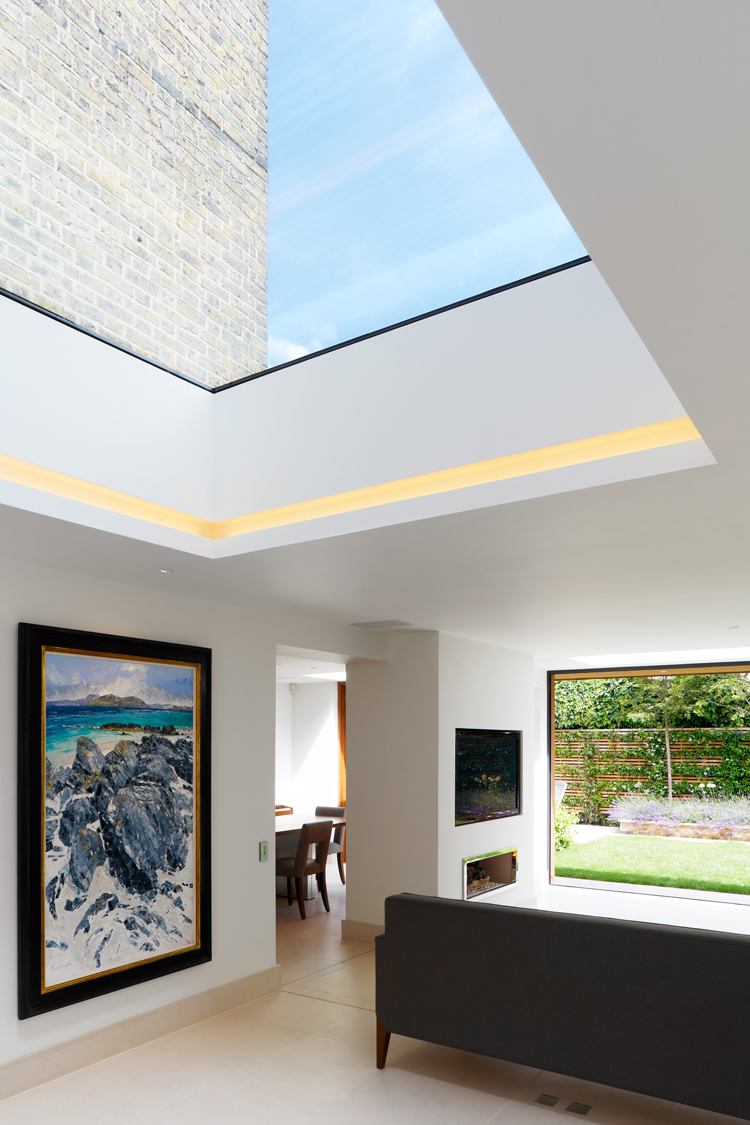
in the dark bulbs will reflect against the glass; using LED tape set into a groove will solve that problem and just create light
Finally, the dining end. Clearly we lost major points here because we don’t have a dimmer switch but Sally had a few other suggestions. In her kitchen she has put spotlights in the floor next to the wall. When turned on these throw a soft wash of light up over the walls which looks like gentle lamplight from a hidden source.
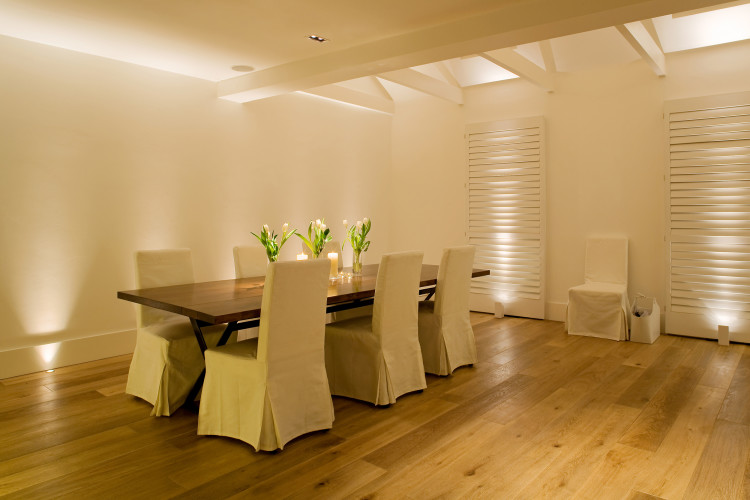
1w LED Lucca Uplights £106 in the floor from John Cullen
My ceiling isn’t high enough for pendant lights although Sally said she would have hidden a spotlight deep in the ceiling which would, like the others, be invisible but just send a shaft of light down to illuminate the table.
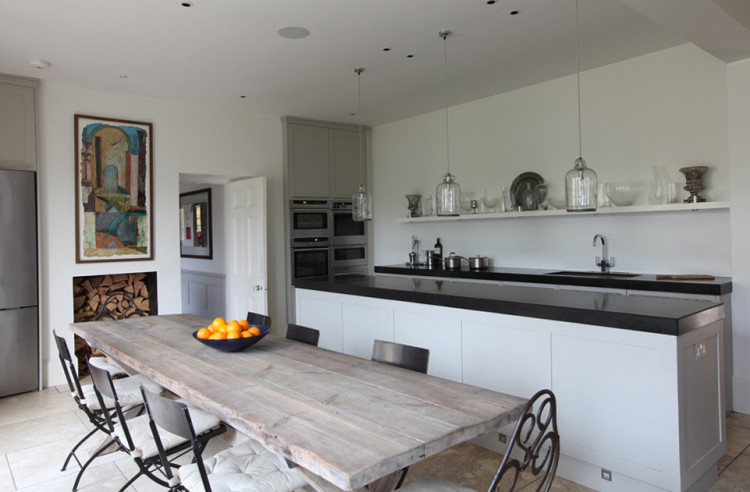
the recessed spots with black baffle are barely visible
I have a skylight in my kitchen which isn’t lit at all. One of the common problems is that at night the bulbs are reflected back up against the glass creating harsh light. Sally suggests hollowing out a groove and installing more LED tape so the dots of the bulbs are hidden but the ambient light remains.
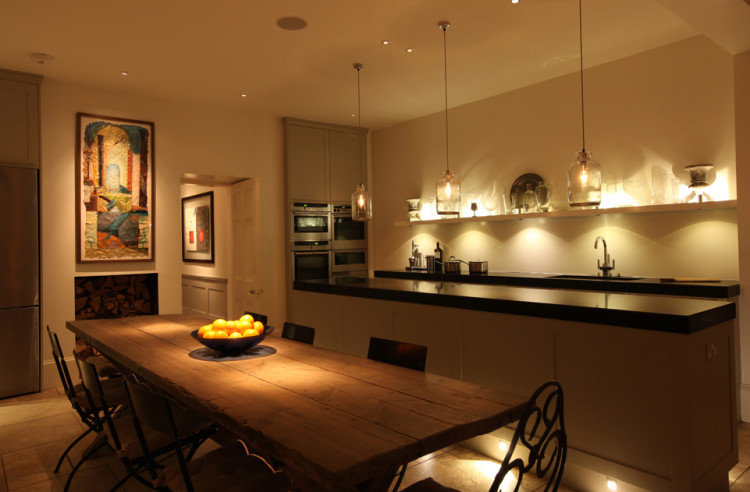
at night the narrow shaft of light casts gentle pools of light on the table
What I found really interesting as we walked round my kitchen was that having tried to think of an alternative to spot lights and completely failed, I actually think I could have lit the whole room without using any. Thus: wall light at the end of the worktop and table lamps at either end of the cupboards, LED tape on the open shelves, floorlights in the dining end and a couple of dimmable wall lights by the table.
Finally, Sally said not to neglect the outside. Even in winter I could have a couple of lights on in the garden or on the deck which would throw a soft light back into the dining end of the room as well as softly illuminating the world outside – rather than just a deep black nothing on the other side of the glass.
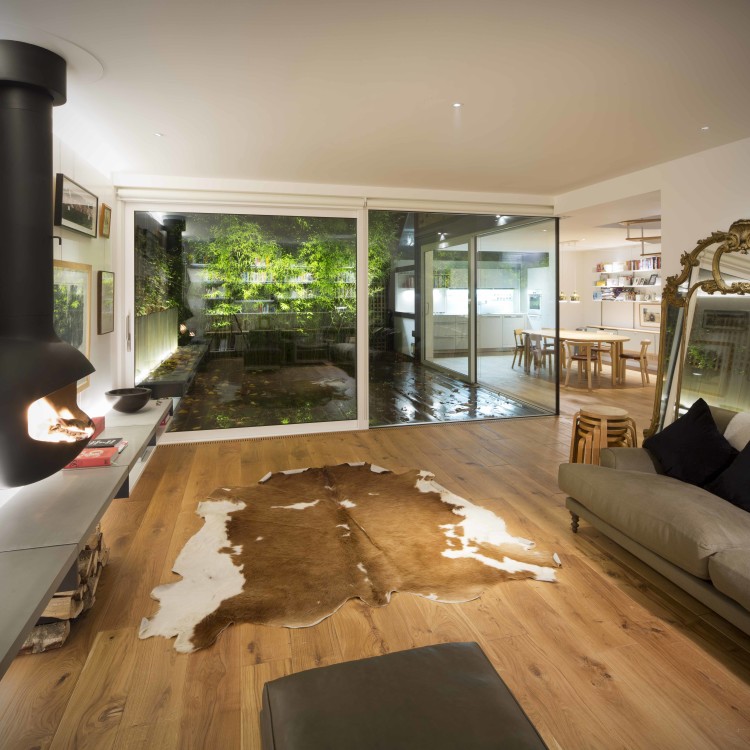
make sure you have some outside lights so it’s not just a black void
In short the rules for the kitchen:
Do not put your spotlights in a symmetrical grid
Make sure your spotlights are recessed into the ceiling
Always install dimmer switches
Have the lights on two or three different circuits so you can choose which part of the room to light
Consider wall, table and pendant lights in every room – including the kitchen
Think about imaginative use of LED tape
Don’t forget the outside
John Cullen hold lighting workshops if you’re interested in learning more detail than I can provide here, check the website for details.
The post How To Get The Lighting Right: The Kitchen appeared first on Mad About The House.
from Mad About The House http://www.madaboutthehouse.com/how-to-get-kitchen-lighting-right-the-kitchen/
No comments:
Post a Comment